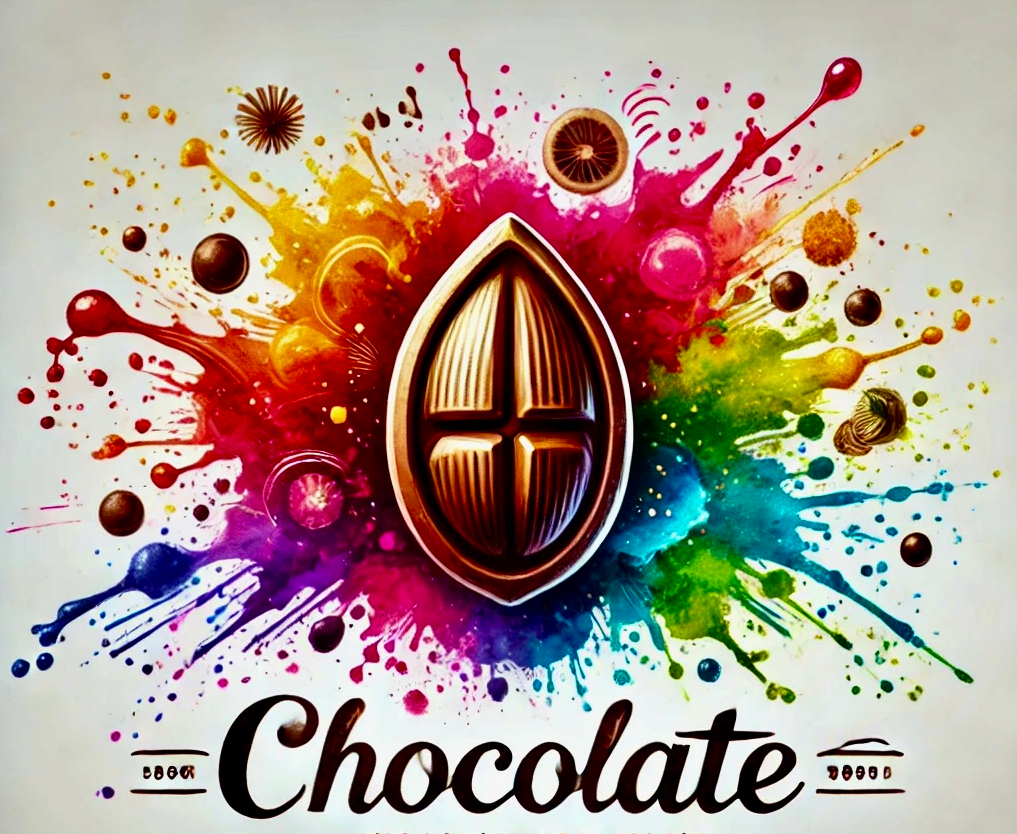As chocolatiers, we dwell in a delicious world of taste and texture — the silky snap of a well-tempered bar, the richness of ganache, the joyful crack of a praline shell.
But there’s another ingredient, often overlooked, that plays just as pivotal a role in the sensory theatre of eating: colour.
Just like a master painter doesn’t reach for a brush without considering their palette, we too must be conscious of the hues we use in our culinary canvases.
Because colour, doesn’t just tempt the eye — it influences how we experience flavour.
Colour: A Signpost to Taste
Nature has long taught us to read colour as a signal. A green strawberry, sharp and underripe. A red one, juicy and sweet. A vibrant green salad looks fresh and nutritious. A bluish tinge on meat? That’s your body waving a warning flag.
In the world of confectionery and patisserie, the message is just as clear. The deep crimson of a raspberry coulis. The golden caramel swirl in a bonbon. The glossy sheen of tempered chocolate. We’re not just eating with our mouths — we’re tasting with our eyes.
The Allure of Colour in Modern Food Culture
Marketers, food bloggers, and Instagrammers have caught on to what chefs have known for years — colour sells. One scroll through your feed and you'll see it: luminous smoothie bowls, rainbow bagels, mirror-glazed cakes. The more visually vivid, the more likely we are to crave it.
It's no coincidence that our brains associate rich reds and warm browns with indulgence and satisfaction. Colour doesn't just suggest flavour; it convinces us of it.
A Flavourful Flashback
Back in the 1980s, during my training at catering college in Wakefield, we conducted a brilliant little experiment that left a lasting impression.
We made a basic jelly: just water, caster sugar, and gelatine. Into this, we dropped clear flavourings — lemon, orange, strawberry, blackcurrant. Then, we tinted them with various colours: red, yellow, green, purple.
And the result? A revelation.
Despite all the jellies being flavoured the same, the students consistently identified them based on their colour. Orange-tinted jelly “tasted” of orange. Red? Definitely strawberry. Their taste buds had been tricked by their eyes.
That moment made it crystal clear to me: colour has the power to alter flavour perception.
Playing with Psychology
Chefs and product developers use colour psychology all the time. It’s why many Indian and Asian dishes are infused with vivid spices — turmeric, paprika, saffron — that signal warmth and richness.
Interestingly, some colours have the opposite effect. Blue, for instance, is a natural appetite suppressant.
Why? Because it’s so rarely found in nature’s pantry. Aside from blueberries (which are technically purple, really), blue foods are virtually non-existent. That rarity makes us subconsciously cautious.
So, if you’re watching your waistline, here’s a tip: try using a blue plate. It might just make your portions feel bigger or your appetite smaller.
When Colour Goes Too Far
A quirky tale from the 1970s highlights how our expectations can be turned on their head. In one experiment, diners were served steak and chips under coloured lighting. The steak looked blue, the chips green, the gravy red.
At first, all seemed well. But once the lights were switched to normal and the true colours revealed, many of the diners felt physically sick. Why?
Because their eyes and tastebuds had been at war, and the illusion collapsed.
It’s a stark reminder that colour doesn’t just dress food — it defines the emotional response we have to it.
Painting with Chocolate
As we create our handcrafted chocolates, let's take a moment to honour the palette we’re using — from the ivory swirl of white chocolate to the deep ebony gloss of a 70% São Tomé single origin.
Natural colourants, like spirulina, turmeric, and beetroot, are finding their way into cocoa butter artistry. And why not? With clean-label ingredients, we can craft visually stunning, flavour-authentic creations that are every bit as vibrant as they are honest.
Whether you're brushing transfer sheets or hand-painting moulds, remember: you’re not just making chocolate — you’re creating edible art.
One Final Thought...
Next time you plate up a dish or temper a batch of chocolate, take a pause. What story is the colour telling? What feeling does it evoke before the first bite is taken?
Because, when used thoughtfully, colour isn't just a garnish. It’s the opening note of a sensory symphony.
For more tales from the world of taste, stay tuned for my upcoming flavour education series: What Does Colour Smell Like? We’ll be decoding the emotional language of flavours — from what “green” actually tastes like to how “brown” became the signature note of comfort.
Until then, keep tasting in full colour.
Yours in chocolate and chromatics, David Greenwood-Haigh
